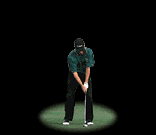

Hello and welcome to our golf cart safety official website.

®


Important
Safety Information:
We hope you enjoy
and benefit!
Warning! Taking just a few minutes to read the following information may reduce your liability and the chance of serious injury or even death to yourself, a family member or friends who may operate or passengers in "low speed vehicles" (LSV), also known as "Golf Carts".
Give Me A Few Minutes of Your Time to Share With You Information Owners, Operators and Passengers of Golf Carts Should Know
Few drivers of golf carts have gone through any formal training in their safe operation. The characteristics and dynamics of golf carts are very different than those of an automobile. Passengers are also at risk due to inadequate safety training. Use of golf carts as a means of alternative transportation is increasing every year. The largest growth in the sales for golf carts is now in the residential setting. More and more teens are now operating golf carts. According to the Consumer Products Safety Commission there are over 10,000 golf cart related injuries every year that require emergency room treatment. PASSENGER EJECTION AND ROLL-OVER USUALLY CAUSE THE MOST SEVERE INJURIES, ESPECIALLY TO THE HEAD. Most golf carts in use do not have seat belts. One factor for this is the lack of suitable anchor points for the restraints and no built in rollover protective structure. The good news is that golf cart manufactures have designed carts with safety devices to help prevent passenger ejection. There are also some simple safety rules that will also assist in preventing injuries.
What Is The Common Cause Of Passenger Ejection And Roll-Overs? What Are Some Ways They Can Be Reduced And Prevented?
A golf cart being driven at close to maximum speed and sharply turned to the left causes the most passenger ejections. The centrifugal forces generated, causes the passenger to be pushed to the right causing the ejection. The driver of a golf cart has less a chance of ejection on a hard left turn at near maximum speed due to the ability to hold onto the steering wheel and their anticipation of the turn. Passengers must be educated in the safety devices designed into the manufacture of golf carts and instructed on their use. Two of the most importation features on golf carts not equipped with seat belts are the "hand hold" bars that rise out of the sides of the seat and "hand hold" molded into the roof on some models. These features can prevent passenger ejection. Another important fact about many golf carts is that braking for many carts is accomplished by only one set of brakes on the rear wheels. This feature can cause instability if golf carts speed is increased due to traveling down a hill or on steep road grades. Many golf carts used in residential settings have been modified with lift kits, speed chips, or modification to speed governors on gasoline powered carts, which may cause excessive speeds.
When you combine increased speeds, sharp turning, and rear wheel breaking, the chances of roll-over is increased.
Safety Tip of the month:
Take time this month to check with you local law enforcement agency if you are operating your golf cart on public roadways.. Make sure your golf cart has the required safety equipment. Several jurisdiction are changing golf cart safety requirements. Also check with your automobile insurer to see if the laws in your state are requiring you to insure your golf cart.
Have your Golf Cart serviced regularly by an Authorized Dealer.
ANALYSIS AND PREVENTION OF CHILD EJECTIONS
FROM GOLF CARS AND PERSONAL
TRANSPORT VEHICLES
Kristopher Seluga
Technology Associates
Timothy Long
Accident Research & Biomechanics
USA
Paper Number 09-0186
Do you need help with golf cart safety awareness training?
Please take a few minutes to watch this video....
SAFETY INFO
